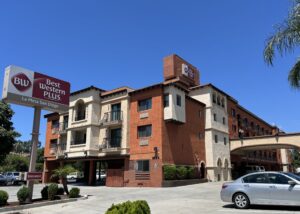California Deals Pace Up After Slow Start to 2019
California Deals Pace Up After Slow Start to 2019
HotelNewsNow
08/27/19
California Deals Pace Up After Slow Start to 2019
By Bryan Wroten
http://www.hotelnewsnow.com/Articles/297797/California-deals-pace-up-after-slow-start-to-2019
IRVINE, California—The pace of California hotel total transaction volume and dollar volume slowed in the first half of 2019, but median price per room set a mid-year record at $130,025, according to Atlas Hospitality Group’s latest survey.
The California Hotels Sales Survey 2019 Mid-Year from Atlas Hospitality Group reports the statewide median price per key is a 12.7% increase year-over-year and an increase of 146% over the past 10 years. Individual sales in the state increased by 8% during the first six months of the year, led by San Bernardino County (83%) and Los Angeles County (57%). San Diego County recorded the highest total sales dollar volume, at just below $329 million. San Francisco County was next at $294 million.
Hotel News Now reached out to Alan Reay, president of Atlas Hospitality Group, for the key takeaways form the mid-year transaction survey.
1. A second-quarter turnaround
A “very quiet” transaction market during the first quarter caused some concern, Reay said. After a 2018 which was widely considered to be down, the first half of 2019 showed signs of mirroring 2009, when there was a big disconnect between buyers and sellers, resulting in transactions plummeting, he said.
That turned out not to be true during the second quarter, he said. Hotel investors still felt good about the economy, especially following the reduction in interest rates. There were a lot of predictions about revenue per available room slowing down, which caused buyers to take a breather in Q1, but most markets in California showed healthy increases compared to national averages, pushing away that fear, he said.
Financing, somehow, has become even more attractive, as commercial-mortgage backed loans are in the low 4% range now and the reduction of the prime rate has helped on the U.S. Small Business Administration 504 loan side, he said.
“Profits have gone up, and the cost of borrowing has gone down,” he said.
2. New investors helped drive transactions
More first-time hotel buyers helped drive many of the sales during the first half of the year, Reay said. Many crossed over from the apartment space, where they sold apartments at high prices and low cap rates, he said.
“They see hotels as a good place to increase cash flow,” he said.
Historically, as buyers come from a different product type, it’s been difficult for them to compete with existing hotel owners, usually on pricing or the ability to quickly remove contingencies, he said.
3. Don’t worry about transaction and dollar volume yet
Reay said he cautions against comparing six-month periods for overall number of transactions and dollar volume. Full-year numbers are more indicative of the overall transaction environment, he said.
Most of the transactions during the first six months of 2019 were smaller transactions, he said. The second half of the year is expected to have higher volume, with nearly 300 transactions by the end of the year, he said. While it may not be a record year for the number of transactions, there are quite a few larger deals in the pipeline, he said.
“We will see larger transactions in the second half based on what’s in escrow and the deals that are on the market,” he said.
4. The cost to buy is driving development
The number attracting the most attention is median price per room, Reay said. That’s spurring sellers to consider putting their properties on the market, and the increasing cost per key is helping drive interest in development, he said.
That raises the question of whether there will be a point in which new supply dampens RevPAR increases, he said. At the moment, that doesn’t appear to be happening, he said.
5. Attractive product types
Limited-service and extended-stay hotels are an attractive product type for buyers, particularly because of their profit margins, Reay said. These types of properties take more to the bottom line because they typically require fewer employees than full-service properties, he said.
Any product type that shies from full-service and a lot of employees is a popular transaction target, he said.


